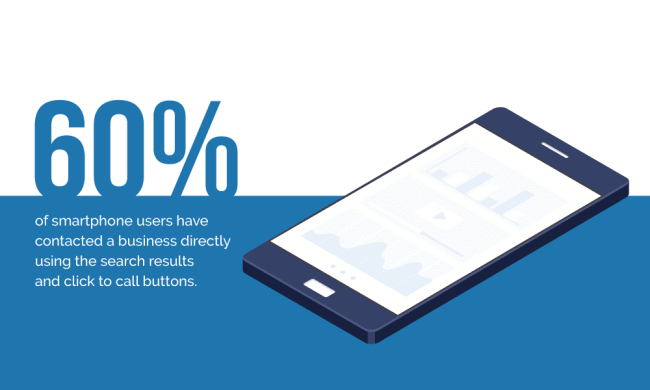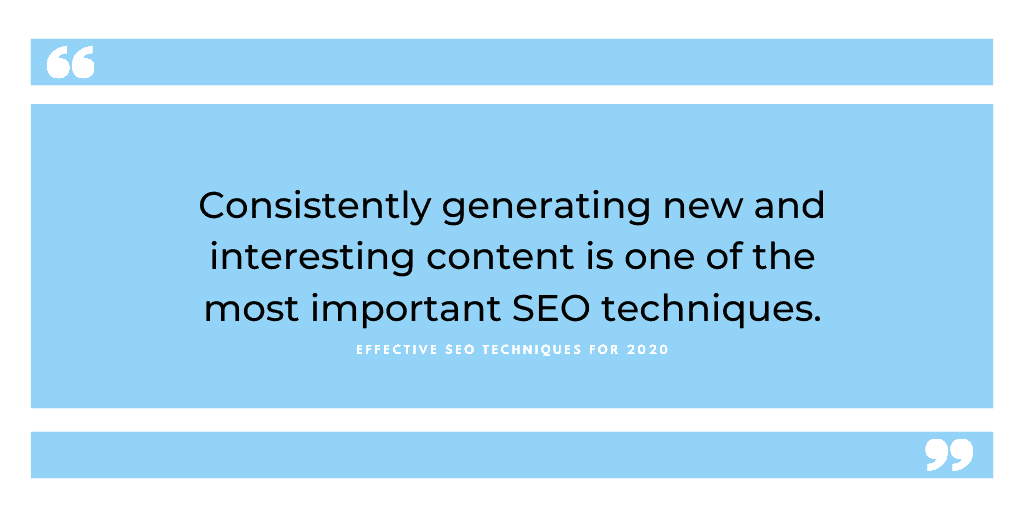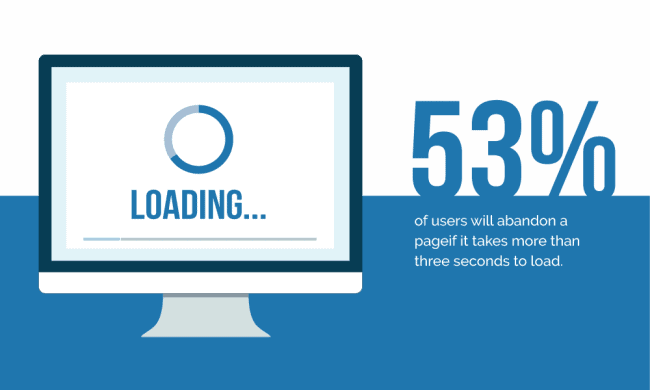SEO has always been a complex and nuanced practice. Search engines like Google continually and consistently update their search engine ranking algorithms. As 2020 launches us into a new decade, the search for the most effective SEO techniques continues. Although there are some techniques that are considered standard, the overall rules of the game are constantly evolving. To achieve the desired results, you must constantly try to stay one step ahead of the updates. We’ve put together an SEO checklist of both existing and new techniques you can implement to get your site on the coveted first page.
Mobile Friendly
Ever since Google’s 2015 mobile-first algorithm update, it’s become crucial that your website is optimized for mobile devices. Hubspot compiled statistics that reveal how prevalent the use of mobile devices has become. As of 2019, mobile devices, excluding tablets, generated about half of all website traffic globally. 60% of smartphone users have contacted a business directly using the search results and click to call buttons. Hubspot also found that almost 25% of companies invest in mobile optimization as one of their top SEO techniques. These statistics clearly show that if your site isn’t mobile friendly, you’re definitely missing a significant chunk of your audience.
 SSL Certificates
SSL Certificates
Once only considered to be an optional security measure, acquiring an SSL certificate for your website has been a confirmed Google ranking factor since 2014. However, many businesses never bothered to get one. In an effort to create a more secure web, Google continued to be an advocate for HTTPS encryption and encourage compliance. In July of 2018, Google Chrome released Chrome 68 which marks sites without an SSL certificate as “not secure”. Sites with an SSL certificate display “https” instead of “http”in front of their URL in the address bar. In addition to assuring users that your site is secure, having an SSL certificate can also give your SEO a boost as it will result in your site being viewed as more authoritative than those without one. Users are more likely to visit a site they know is secure and they view as an authoritative source for the information, services or products they are searching for. Increased traffic to your site can have a positive impact on your SEO.
Content is King
Though It may sound cliche, it remains true. Consistently generating new and interesting content is one of the most important SEO techniques. The days of simply generating keyword-stuffed content in an attempt to improve your ranking are over. SEO techniques such as this can actually hurt your rankings with Google. In an effort to provide users with the sites most relevant to their search, Google has become quite proficient at breaking down and making sense of content as well as identifying unethical tactics like keyword stuffing. As a result, Google may penalize you by demoting your site, or even removing it from the rankings completely.
The length of your content can also impact your SEO. Traditionally, it was considered an effective SEO strategy for website pages to be at least 350 words and blogs to be 500 words or more. A recent Search Engine Journal article seems to support the theory, along with many experts, that creating longer content can boost your SEO.
It’s important to point out the length is not the only important factor. The content can’t just be long, it has to be relevant, authoritative – something that users and Google will consider valuable. It’s important that it first answers the question that initiated the search. If the topic warrants longer content, go for it. 2019 research by Hubspot found that for SEO, the ideal blog post length should be 2,100-2,400 words. 2018 research by Ahrefs found that longer content not only ranked better, it generated more backlinks and social shares.
In most cases, 2000 words may be much more that is needed for a website page. However, increasing the word count on your website pages with relevant content can also give your SEO a boost. While expert opinions on the perfect number vary, aim for a word count of 400 to 600 for your website pages.
 Keywords
Keywords
Despite the theories that Google’s Hummingbird update or it’s AI driven RankBrain are making the use of keywords obsolete, they are still vital for SEO success. Both updates have made Google more perceptive when it comes to understanding search intent. Hummingbird improved the way the search engine’s algorithm interprets “conversational” or “long-tail” phrases. The update was aimed at ensuring that whole phrases are understood fully rather than just as a string of singular search terms. This means you need to think more organically. You must shift your focus from isolated keywords to conversation keyword phrases that better reflect how people search.
RankBrain allows Google to understand those phrases and connect them with the true intent of a search. Google’s 2019 update, BERT, pushed these efforts even further. This update is aimed at complicated search inquiries that rely on context, especially those where stop words such as ” to” and “for” significantly affect the intent of the search. With the rise of voice search, these updates are especially important for producing more accurate search results. However, they have not eliminated the use of keywords. They just changed the way we need to implement them. Keywords should be incorporated into your content in a more natural, conversational way.
Optimize Titles and Headings
When it comes to effective SEO techniques, this should be a given. However, we often see it overlooked when auditing new sites. It’s essential that your pages are targeting the best possible keywords. The title tag can have a significant impact on search engine optimization, but only if it includes the proper keyword or phrase. H1 and H2 headings should contain the keyword or a variation of it. The H1 heading is the most important of these, so it should be the first thing at the top of the page. It is often the same as the title although it doesn’t have to be. Multiple keywords can be incorporated into a single page but make sure the best keyword has top billing. Another opportunity for optimization that is often overlooked is the meta description. It should include your keyword or phrase and entice users to click on your link.
Build Backlinks
Google favors authoritative sites and encourages building backlinks. It’s an important step in establishing your website’s authority. The goal is to have other relevant and authoritative websites link to your site. Unfortunately, this rarely happens organically. The best way to build backlinks to your site is to link to other sites in your content. Search out sites relevant to your industry that have a high domain or page authority. The sites you link to may check out your site. If they find your content to be valuable they may return the favor and link to your site.
There are tools such as Moz Link Explorer where you can check the domain authority of any site. The Moz Toolbar is a Chrome extension that adds a bar to the top of your browser that shows both the domain and single page authority. Authority is ranked from 1 to 100. Ideally, the closer a site is to a ranking of 100, the better it is to link to it. Those closest to 100 include sites like Wikipedia, Facebook and Google. They tend to be extremely choosy about the sites they link to. While you may not be able to gain those backlinks, you will want to focus your efforts on sites with a ranking above 50. You can also subscribe to paid tools like cognitiveSEO that provide a variety of helpful backlink analytics from analyzing competitors sites to identifying those most likely to share content relative to your industry.
Navigation and Breadcrumbs
Ease of navigation is important to those visiting your website but how your navigation is structured can also impact your SEO. Optimizing your navigation is one of the SEO techniques that can benefit both. First, take a look at your navigation bar or menu. Does it have generic titles like “services”? They should be more descriptive, letting both users and search engines what those paes contain.
For example, let’s say you own a roofing company. Instead of “services” with a drop down menu it is better to have as many individual descriptive top navigation items as you can without cluttering up the menu. You could list your most important services using relevant keywords such as “Residential Roofing”, “Commercial Roofing” and “Roof Repair”. You could then use drop down menus as needed for more specific services.
Take a look at your website’s analytics to see what items in your navigation are getting the most clicks and which are getting the least. If your most important items aren’t getting enough clicks, try renaming them using a more commonly used keyword. Items with the most clicks should be prioritized by either putting them on the top navigation bar or as the first item on the drop down menu. A few weeks after optimizing your navigation, take another look at your analytics to see what’s improved and what hasn’t and make the appropriate adjustments.
If you have an eCommerce site or one with a large amount of hierarchically arranged pages, adding breadcrumbs can also improve your navigation. Breadcrumbs are a secondary navigation scheme that reveals the user’s location in a website. They are typically horizontally arranged text links at the top of the page separated by the “greater than” (>) symbol. For example, if you search a website for women’s walking shoes in a wide width, the breadcrumb trail might look like this: Shoes>Womens>Walking>Wide Width. This signifies the level of each page relative to the pages beside it. Breadcrumbs provide a number of benefits including ease of navigation, reduced clicks to return to high level pages, and reduced bounce rates.
Internal Links
Creating internal links that connect various pages on your website is equally important as building backlinks. There are different types of internal links. There are the links on your home page and navigation menu as well as the links in your post feed. Links included in a piece of content are called contextual links. These lead users to additional relevant or more in depth information that exists on your site. Contextual links also allow search engines to learn what content you have on your site. The value of a piece of content or web page is determined by how many links there are leading to it.
Linking your pages together cohesively makes it easier for search engines to navigate and evaluate your site which is crucial for your SEO. Search engines crawl sites using bots, spiders and web crawlers. These are all basically the same thing and each search engine has its own version. Google has the Googlebot. It scours a site for new and updated content as well as new, changed or broken links. The Googlebot then makes suggestions as to which information should be added to the index – aka – Google’s brain. To ensure Google can accurately crawl your site, it’s important to assess its crawlability. If your site’s crawlability is good, Googlebot and other web crawlers will visit often.
Site and Page Speed
Because they are so closely related, site and page speed are often confused. Site speed refers to the sitewide loading process whereas page speed refers to the loading time of an individual page. Slow site speed and page load time can significantly impact user experience. This can reduce visits, increase bounce rates. and result in lost conversions. According to Google, 53% of users will abandon a page if it takes more than three seconds to load. Because a poorly performing website results in poor user experience, site speed and page load time can also affect your SEO ranking.
Back in 2010, Google announced that they would include site speed as a new signal in their search ranking algorithms. Then in 2018, they rolled out the Speed Update which made page speed a ranking factor for mobile searches as well. Google has a Chrome extension you can use to check your page speed. A good bit of overlap exists between site and page speed. There are actions you can take to improve both. Slow site speed can be a result of your server’s software or your hosting solution. You can check for issues such as insufficient memory and slow routing or database inquiries.
If your site has massive amounts of content you may want to consider a content distribution network (CDN). A CDN consists of a network of servers with copies of your site delivered to each one. These copies reside at multiple geographically diverse data centers allowing users to have faster and more reliable access to your site. Reducing the physical and memory size of your site’s images can in turn decrease page loading time. Deleting unused software and scripts can help increase both site and page speed. These are just a few ways to improve user experience and your SEO ranking.
 Get Social
Get Social
Love it or hate it, social media is here to stay. You can either ignore it and miss out on tons of growth opportunities, or embrace it and reap the many benefits it affords. A strong social media presence and strategy that entices users to find and share your content can go a long way toward enriching your site’s SEO.
You can start by establishing as many social media profiles as possible. Even though you may end up not using all of them, it’s best to secure them before a competitor does. Facebook, Instagram, Twitter and LinkedIN are some of the most popular platforms. However, it is best to experiment with different ones to see which platforms are the best for reaching your target audience. Depending on your specific business or industry, you may want to try more niche platforms such as Reddit or Houzz. While these platforms may not have as many followers, if that’s where your audience likes to hang out, you need to be there.
Once you’ve identified the social media platforms frequented by your target audience, use them to encourage the sharing of your content. You can add like and share buttons to your pages. You can also add CTA’s to your content. The goal is to have your social media drive more traffic to your website. You should also share content from other sites you feel your audience would find interesting. This can encourage others to share your content in return and help build backlinks. Establishing a solid social media presence and reputation signals to search engines that your site is relevant and authoritative.
Google My Business
With 85% of consumers utilizing online search to find businesses that provide the products and services they want, optimizing your Google My Business (GMB) listing has never been more important. It is also vitally important for ranking higher on search results . Be sure to provide all essential contact information, pertinent product or service information and attractive images of your location. Once you’ve claimed your GMB listing, start asking you customers for reviews. Don’t be shy. Every time you have a satisfied customer, ask them to leave your business a review.
Implementing Effective SEO Techniques
While many of these techniques are simple, some are a bit more complicated and they aren’t the only ones that can be implemented. Keeping up with all of them can become overwhelming with all the other operational and marketing responsibilities business owners and managers have to handle. Maybe it’s time to call in the SEO experts. Our team can handle all your SEO questions and concerns while implementing the latest SEO techniques to land your business on page one.




